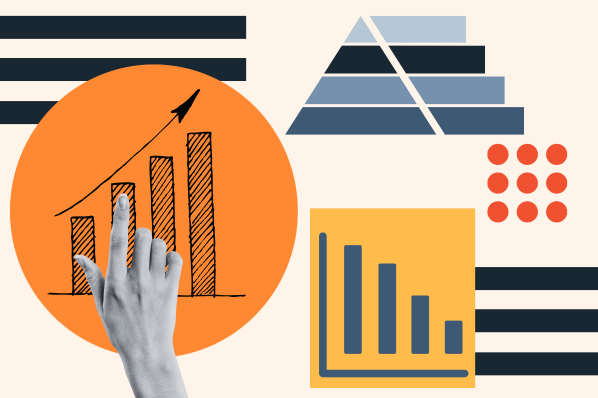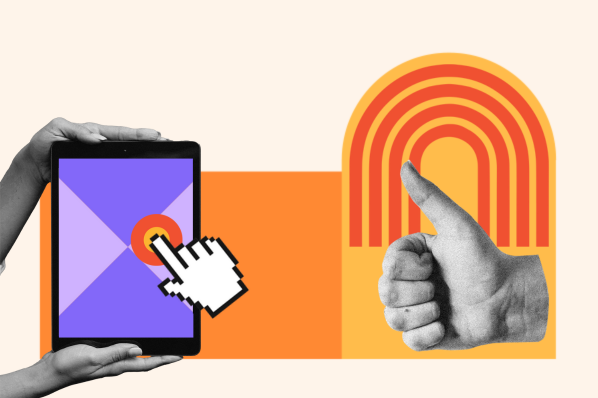Let's explore what a UX storyboard is, how to make one, and look at some examples of storyboards in action.
Table of Contents
- What is a UX storyboard?
- How to Make a UX StoryBoard
- UX Storyboard Examples
- UX Storyboard Best Practices

The Benefits of a UX Storyboard
UX storyboards allow you to outline and standardize your user experiences. You can then more easily create a remarkable journey for every customer. Let’s explore the benefits below in depth.
1. A Refined Understanding of the User Experience
A UX storyboard can help development teams understand the user's objectives, pain points, and the functionalities they will depend on. This tool may make the product or service more efficient and user-friendly.
2. Improved Collaboration and Communication
Using UX storyboards can improve collaboration by allowing teams to collectively use the same visuals to agree on the user's experience. Having a shared understanding will ensure that the teams’ goals are aligned. As a result, the team can be more productive.
3. Reduce Potential Problems
Visually stepping through the user's experience can help the team identify what problems may arise for the user. Identifying such issues early on reduces the amount of development time. Consider a website in its development stage. Once your team starts coding the website, it can be costly and time-consuming to re-do the components after development.
When to Use a UX Storyboard
Initial Product Design
Imagine you have an idea for a new payment provider application similar to CashAPP. You want to give users the feature of having a shared account to hold monies for things like group vacations, event planning, etc.
The purpose of the account is for everyone to have ownership of the amount they put in to promote trust in a shared fund collection.
In this scenario, you would use a storyboard to represent the user's process from when they click on the app all the way to the step where they finally see their money listed in the desired shared account.
Throughout the mapping journey, you would be able to create processes and functionalities that simplify the user experience while achieving the purpose of the app's shared account feature.
User Testing
Still using our payment provider scenario, you can use the wireframes and mockups you have on your UX storyboard to build a simulator. The simulator will act as if it were an actual application.
You can then ask a group of volunteers to use the simulator and provide feedback. This process allows you to get real-world feedback from users to resolve problems or frustrations before development begins.
Stakeholder Demo
Imagine you have a new application that you want to bring to the public, but you need more funds to get started. You’re looking for investors, but you must pitch your idea to get them to invest in you.
You can use UX storyboards to effectively communicate the value and potential impact of the product or service and help secure buy-in and funding for further development.
How to Make a UX StoryBoard
You don't have to be an expert at drawing to create a UX storyboard. However, it is beneficial to understand key design principles. You can use the step-by-step guide in this section to create your own storyboard.
1. Check the data.
Connect with your team members to get access to any UX research data they’ve collected. Qualitative data includes user feedback, focus groups, and observational studies. Quantitative data may feature click-through rates, conversion rates, bounce rates, and time on page.
This data can be extremely helpful in understanding user stories. You’ll know where they tend to go first when using your interface.
2. Focus on a user story.
Depending on the number of functionalities a product has, you may have several user stories. Focus on one at a time to make sure each story is complete and fully considered. Later, you can put all of them together to see the big picture and figure out how they relate to one another.
3. Sketch each frame.
Sketch out each frame of your storyboard. Each frame should represent a specific interaction between the user and the product. You can use icons or simple drawings to act as the user, product, and other important elements.
Image Source
4. Describe each frame.
You want to ensure readers know what's happening in each frame. Add descriptions to explain exactly what would happen if this story was live.
5. Create transitions.
Adding arrows or other signs to signify transitions can help your team understand how users get from one step to the next.
6. Review and refine.
Now that your draft is done, see if you need to make changes. Check for spelling, unclear descriptions, and missing iterations.
7. Get feedback.
When your draft is final, share your storyboard with your team for feedback. Remember, it’s normal to make changes during this stage as well, as your team may find missing iterations or potential issues that may arise for the user.
UX Storyboard Examples
Digitally Designed Storyboard
Storyboards can be made digitally or on paper. Let’s take a look at a digital example.


This storyboard from ABCcorp.com follows the user who chooses a category on the homepage and navigates to the info page. Once on the sales info page, the user can click the “Learn More” button if interested.
On the learn more page, users can start a free trial to interact with the product. After interacting with the product, the user can purchase a subscription.
What we like: The descriptions below each frame are helpful because they state the purpose of the desired action and ask helpful questions developers should consider to ensure the design will actually lead the user to take the desired action.
A Demo Storyboard
You can also use storyboards to show your user how to use your product, such as the one below.
This storyboard shows users how to sign up for SoloMoFoo.com. The second and third frame shows what information the user will provide to sign up for an account. After signing up, the user can locate food options, and the application will tell them the location.
What we like: The clear directions will help users navigate this app seamlessly.
UX Storyboard Best Practices
Be clear and concise.
Storyboards should flow effortlessly. It's best to keep them straight to the point using related visuals and avoiding unnecessary details.
Refine, refine, refine.
Storyboards are hardly ever a one-and-done process. Instead, storyboards are an iterative process meant to be adapted and changed as feedback is collected.
It’s all about the user experience.
Make sure you create storyboards based on the user's needs, actions, and frustrations. Doing so will ensure that your product is designed in the best way possible for your users.
Collaborate with your team.
Remember, storyboarding is a process. It‘s best to collaborate with as many peers as possible to share ideas and feedback to improve the design. Collaborating with your team will ensure that everyone’s goals are the same.
Create Your Storyboard
UX storyboards can help the overall design process run smoothly. Figma and HubSpot have excellent storyboard templates that you can use to get started. Whether you have a fantastic idea that you want to bring to life or you are on a design team, you can start creating your storyboard today!
User Experience
.png?width=112&height=112&name=Image%20Hackathon%20%E2%80%93%20Square%20(10).png)




![How to become a UX designer, a step-by-step guide [expert tips]](https://53.fs1.hubspotusercontent-na1.net/hubfs/53/become-a-ux-designer-1-20240731-321437.webp)


![How to Add a Parallax Scrolling Effect to Your Website [Examples]](https://53.fs1.hubspotusercontent-na1.net/hubfs/53/scroll-Aug-11-2023-05-24-08-8793-PM.png)

![20 UX Design Examples Hand-Picked by Experts [With Analysis]](https://53.fs1.hubspotusercontent-na1.net/hubfs/53/ux-design-examples-1-20250404-8425368.webp)
